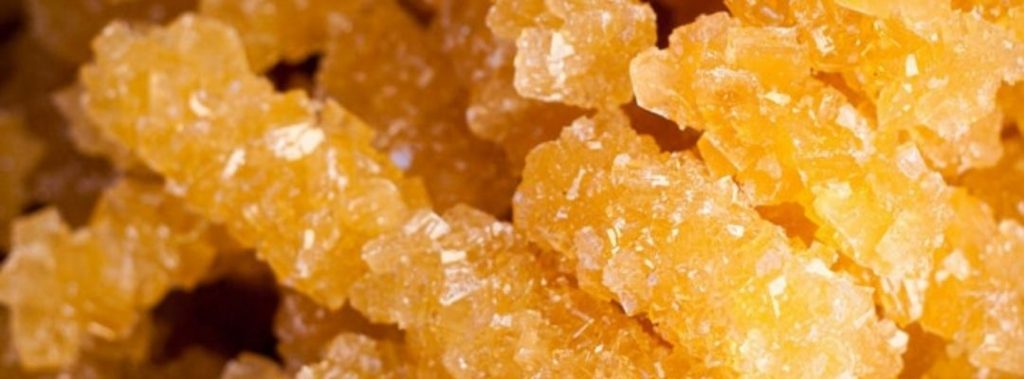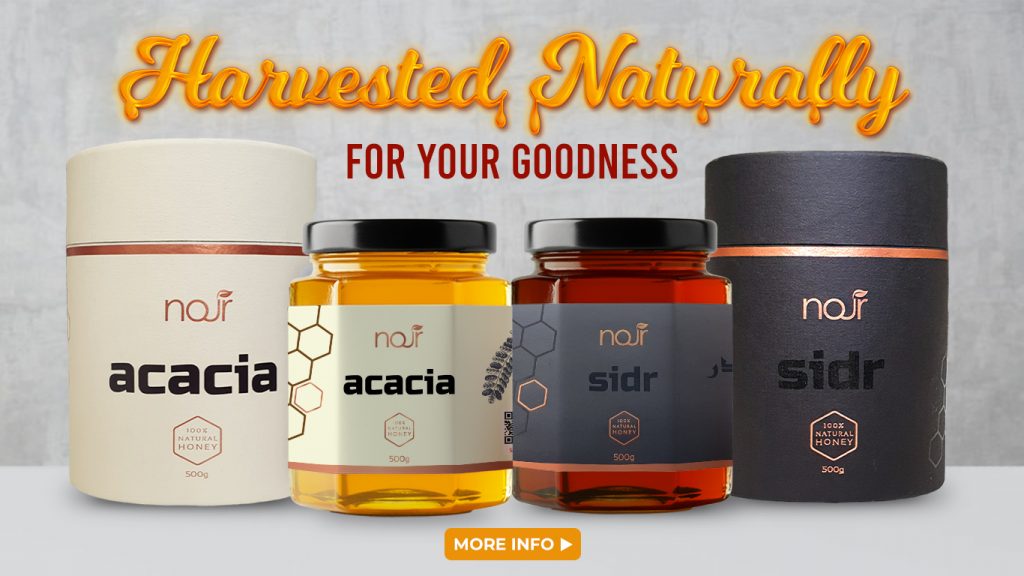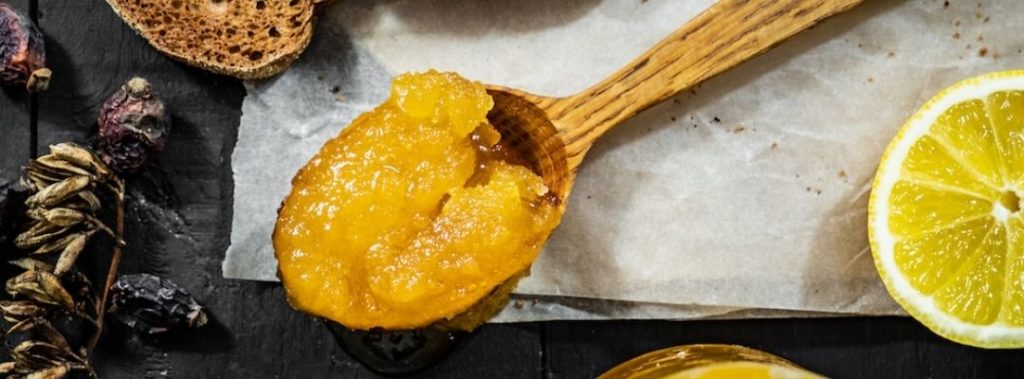Don’t throw out your crystallized honey. Eat it. It’s delicious and perfectly safe.
FOR SOME REASON, there is a perception that honey that crystallizes has “gone bad” or that it is a sign of contamination. No! It’s actually a sign of high quality honey. Don’t throw your crystallized honey out, unless you like to waste delicious food.
Honey is a super-saturated solution of two sugars: glucose and fructose. Since it’s super-saturated, it’s a natural chemical process that some of the sugars eventually come out of solution. Honey will even crystallize when it’s still in the comb.
Crystallized honey is delicious in tea, on yogurt, on a toasted bagel, and on oatmeal. It’s a fabulous spread glaze for cooking chicken or stir-fry, and …
This is where I realized that I needed to stop listing and taking photos of honey on things, because I kept eating all my photo models.
Back to the science.
Three things make honey more likely to crystallize:
- Temperature
- The ratio of glucose and fructose in the honey
- Pollen
Let’s break down what’s happening in your honey, and what you can do about it.
Temperature

Honey will crystallize in the hive if the temperature goes below 50ºF (10ºC), and honey will crystallize in your containers if you have a cold cupboard cabinet. Finding a warmer spot to store your honey will slow crystallization.
It’s fairly simple to turn your honey back into a smooth liquid again by heating it. The best way to do this is by to put your honey in a bowl of warm water and slowly letting it warm up. If you happen to have anultrasound machine that produces waves at 23 kHz lying around, that works too. Microwaving overheats the honey and doesn’t heat evenly, so that’s not recommended unless you are in a hurry.
The problem is, as soon as your honey cools down, it will begin slouching back to chunky again. The simplest way to deal with this is to embrace your lovely honey lumps, and acquire a taste for crystallized honey. After a few sessions of heating and cooling, your honey will loose that wonderful aroma of summer, and just become yellow sugary goop.
If you really must have smooth runny honey, try heating a smaller batch, rather than the whole container. Honey also keeps best in glass, rather than plastic, and glass is much better for reheating.
The ratio of glucose and fructose in the honey
Honey is a super-saturated solution of two sugars: glucose and fructose. The proportions of these two sugars are characteristic of the plants the bees fed on to make their honey. It’s the glucose that crystallizes, so some types of honey are more resistant to crystallization because they have low glucose.
Alfalfa and clover honeys crystallize quickly; maple, tupelo, and blackberry honeys crystallize slowly. There really isn’t an easy way for someone who isn’t a honey foodie to know which honeys crystallize faster or slower, but this is a good excuse to experiment with the flavors and aromas of different plant honeys.
Pollen
Pollen in honey is normal, and acts as a sort of honey provenance. Pollen in honey verifies what plants the bees are feeding on. Bees are fuzzy, so while they are drinking nectar to make honey, they get covered with pollen. It’s sticky stuff – but, you know, it is plant sperm. That junk gets everywhere.
Honey with pollen in it is great honey, but crystallization happens faster when there are small particles available to build on. Fresh, raw honey has a lot of those in the form of pollen grains.
Because Americans tend to be a bit paranoid about cosmetic defects in food, a lot of honey is now filtered to remove pollen. This does creates a more shelf-stable honey, and it is clearer and brighter in color. Basically, it’s cosmetic surgery to make your honey pretty.
The problem with pollen-less honey is you don’t know where it came from, or what kind of plants the bees were feeding on. Filtering has a shady side effect: it makes it easier for honey to be processed and shipped longer distances (like from China) and means that many different kinds of honey can be blended together undetectably.


